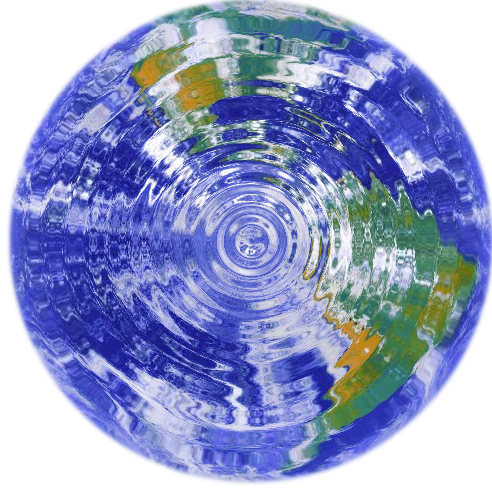 |
 |
 |
| Home page |  |
ROB Home |
Work done at ROB
Home
> Work done at ROB (1)
This is caused by the fact that satellite techniques are not able to determine UT1 in an absolute sense due to the high correlations of the Earth rotation and orientation angles with the satellite orbital elements; only the time derivative of the quantities related to angles is accessible to GNSS, while the angles are obtained from VLBI. Precise VLBI-only EOPs (Earth Orientation Parameters) and reference frames determination is routinely done at ROB in collaboration with the Paris Observatory IVS (International VLBI Service) Analysis Center (http://ivsopar.obspm.fr/).
We thus provide VLBI series independently from the other data analysis centers. It is obvious that it is better to use both the observation of a quantity and of its time derivative to determine its time evolution. Therefore, it is important to consider the combination of these quantities obtained from different geodesic techniques on the one hand, and to improve the way in which these quantities are derived from GNSS measurements on the other hand.
ROB has the scientific project aiming thus firstly at obtaining a GNSS-VLBI combined solution for the Earth orientation and rotation variation in order to improve the nutation and the rotation angle UT1. Secondly (or in parallel), within this research project we propose to work out a strategy to improve the determination of these quantities determined by GNSS only.
The present Earth nutation model is based on adjustments of geophysical parameters on Very Long Baseline Interferometry (VLBI) observations. In order to improve the model it is thus necessary to improve the parameter determination from observation, which is proposed in this research project by combining VLBI and GNSS (Global Navigation Satellite System) data. The aim of our proposal is to define a strategy of combination of VLBI and GNSS in order to obtain a better accuracy and a better consistency of the nutation series. Furthermore, the GNSS determination of Earth orientation parameters (in particular the nutations and the length-of-day variations) will be studied, with the objective of improving the precision as well.
The geophysical parameters determined from the new nutation series will be re-evaluated and therewith the nutation theory will be improved.
Determination and modeling of nutation from VLBI (Very Long Baseline Interferometry)
and GNSS (Global Navigation Satellite System) observations.
The Length-of-Day (LOD) and polar motion (PM) parameters are known at about 0.10 mas
(or 0.01 ms in time unit) from GNSS (Global Navigation Satellite System), and Polar Motion
rate is determined to better than 0.3 mas/day. In addition, GNSS allows determining daily
as well as subdaily (2-6 h) values for these parameters. The precision of polar motion and
LOD determined by GNSS (0.15 mas) is much better than the precision of precession, nutation,
and UT1 rotation angle derived from GNSS (2.25 mas). and GNSS (Global Navigation Satellite System) observations.
This is caused by the fact that satellite techniques are not able to determine UT1 in an absolute sense due to the high correlations of the Earth rotation and orientation angles with the satellite orbital elements; only the time derivative of the quantities related to angles is accessible to GNSS, while the angles are obtained from VLBI. Precise VLBI-only EOPs (Earth Orientation Parameters) and reference frames determination is routinely done at ROB in collaboration with the Paris Observatory IVS (International VLBI Service) Analysis Center (http://ivsopar.obspm.fr/).
We thus provide VLBI series independently from the other data analysis centers. It is obvious that it is better to use both the observation of a quantity and of its time derivative to determine its time evolution. Therefore, it is important to consider the combination of these quantities obtained from different geodesic techniques on the one hand, and to improve the way in which these quantities are derived from GNSS measurements on the other hand.
ROB has the scientific project aiming thus firstly at obtaining a GNSS-VLBI combined solution for the Earth orientation and rotation variation in order to improve the nutation and the rotation angle UT1. Secondly (or in parallel), within this research project we propose to work out a strategy to improve the determination of these quantities determined by GNSS only.
The present Earth nutation model is based on adjustments of geophysical parameters on Very Long Baseline Interferometry (VLBI) observations. In order to improve the model it is thus necessary to improve the parameter determination from observation, which is proposed in this research project by combining VLBI and GNSS (Global Navigation Satellite System) data. The aim of our proposal is to define a strategy of combination of VLBI and GNSS in order to obtain a better accuracy and a better consistency of the nutation series. Furthermore, the GNSS determination of Earth orientation parameters (in particular the nutations and the length-of-day variations) will be studied, with the objective of improving the precision as well.
The geophysical parameters determined from the new nutation series will be re-evaluated and therewith the nutation theory will be improved.